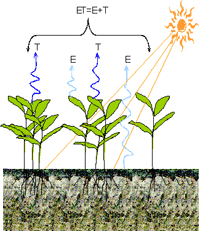Agricultural Research Division of IANR

West Central Research and Extension Center, North Platte
Date of this Version
2016
Citation
Bulletin of the Ecological Society of America, 97(2), pp 150-152.
Abstract
Following my Ph.D., I moved on to Nebraska, where as a beginning faculty member I was able to start a research program in ecology and continue to study what intrigued me most: plant competition and stress. It was during this time that I came across the paper by Peter Alpert (see his article below) and his colleagues on “Invasiveness, invasibility, and the role of environmental stress in preventing the spread of non-native plants” (Perspectives in Plant Ecology, Evolution and Systematics 3:52–66). It was an “aha” moment in reading about biological invasion research and the current consensus at that time regarding invasiveness and invasibility in plant species and communities. I had seen first-hand or at least I had thought about things like nonnatives remaining noninvasive for long periods, the relationship between plasticity and invasiveness, and the “unlike invader” hypothesis, which were all touched on in the paper. Add to this the discussion on the topic of stress (e.g., drought) affecting invasibility and the conceptual diagrams showing hypothetical responses of native and nonnatives under minimum and maximum levels, and I was convinced that my ideas were similar to those of others. For the first time, I did not feel alone in my thinking. In a way, it was a newfound freedom that allowed me to ponder more deeply the effects of stress on invasive plants. Extreme drought is a type of stress or selection pressure imposed on plants and communities of plants that can reveal fitness and plasticity differences that if understood could have profound impacts on invasion and community assembly theory.


Comments
© 2016 The Authors. The Bulletin of the Ecological Society of America, published by Wiley Periodicals, Inc., on behalf of the Ecological Society of America. This is an open access article under the terms of the Creative Commons Attribution License,